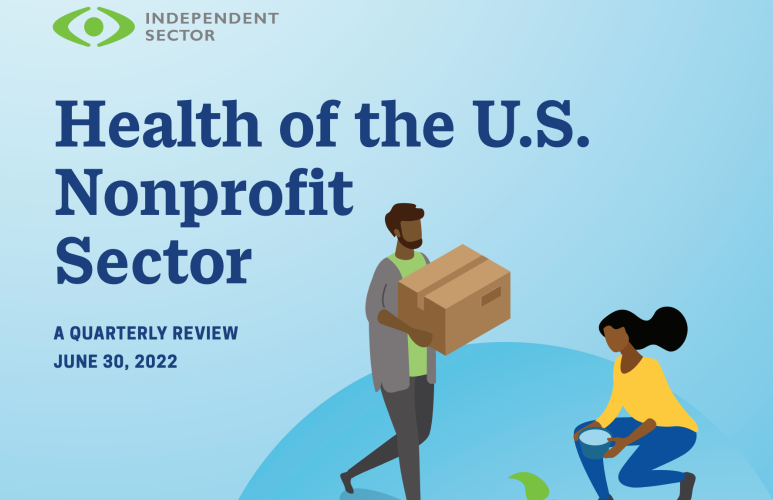Nonprofits contributed $1.4 trillion to the nation’s economy during the first quarter of 2022, with growth in the gross value added by nonprofits exceeding the overall Gross Domestic Product (GDP) by 1%.
Despite positive signs and comparable charitable giving in 2020 and 2021, the current 8.5% inflation signals that “holding steady” financially is not good enough for some organizations to maintain staff, services and impact at 2021 levels, according to data in a quarterly review “Health of the U.S. Nonprofit Sector,” released by Independent Sector.
And, no surprise, it’s going to cost more to keep workers, according to the researchers.
A trend to monitor, particularly in a volatile economy, is that fewer donors are giving more to nonprofits while the number of smaller-gift donors have decreased, the report’s authors pointed out, citing the Nonprofit Effectiveness Project. The year 2020 was considered an outlier with generosity attributed to the pandemic. While dollars have increased 11% since 2019, giving rates show that donors have dropped by 0.8% and donor retention has dipped 7.9% since 2019, according to the report’s authors.
During the first three months of this year, the gross value added by nonprofits was 7.5%, exceeding the Gross Domestic Product (6.5%). While positive, “It is too early to tell whether this is the leading edge of an accelerating recovery that more closely resembles trends following past economic downturns,” according to the report’s authors.
During the 2008 recession, a few nonprofit subsectors had increases in overall revenue, especially if their missions were relevant during times of economic downturn. The months ahead and analysis of the industry’s second quarter may illuminate the extent on which economic trends like inflation or “stagflation” impact nonprofits, the report advises.
Other economic findings in the report include:
- Inflation poses a serious problem for nonprofits and communities they serve and significant increases in inflation combined with relatively flat resources can erode ability of nonprofits to maintain current levels of service and impact.
- Because inflation hits low and middle-income households the hardest, income inequality can be worsened and may reduce those households’ ability or desire to donate.
- Households are more likely to give when they feel economically stable, the report’s authors noted, referring to #GivingTuesday which found that the economic stimulus payments of $1,200 per person in 2020 led to an increase in $1,200 and $2,400 donations.
The report’s authors recommend consideration of several short-term responses, including one already underway since last year by nonprofit lobbyists and leaders: Asking Congress to reinstate the non-itemizer charitable deduction that expired at the end of 2021. Another option is educating donors and funders about financial needs if inflation is hurting a nonprofit, including those that are smaller, situated in rural locations or led by people of color who may face greater challenges.
Independent Sector researchers also analyzed first quarter “Human Capital” trends, finding that nonprofit workers comprise 6.4% of the U.S. workforce, up 1.9% since the last quarter of 2021.
The sector workforce is continuing a trend of losing racial and ethnic diversity, with the proportion of white workers (77.9%) higher than pre-pandemic levels (about 70%). Generally, however, the racial and ethnic proportions of the nonprofit workforce track with demographics of the broader workforce, except for Hispanic workers, who currently make up 11.1% of the nonprofit workforce and 18.5% of the overall workforce, according to data in the report.
Nonprofits and philanthropy should begin planning now for a potential increase in overtime pay. In a regulatory agenda published on December 10, 2021, the U.S. Department of Labor (DOL) announced its intention to review and update Fair Labor Standards Act (FLSA) regulations regarding the overtime threshold, according to the report’s authors. Since April 2022, DOL has been hosting virtual listening sessions across the country to hear how updates to the rule might impact communities – including nonprofits and their employees. Although the exact details of the changes are not yet known, federal regulatory activity over the past few years may hint at future changes.
